At the start of 2020, the world was excited for the start of a new year and decade; I was optimistic about the opportunities that the year would bring for my friends and I, as well as the potential growth I’d experience throughout the year, personally and professionally. Then, in February and March, news started to trickle in about a flu-like virus called COVID-19 – one that has now come to impact nearly every aspect of our lives. And three months into the pandemic, a Black man named George Floyd was killed at the hands of Minneapolis police, reigniting and sustaining uprisings across the country that began in Ferguson in 2014.
For reporters, 2020 presented an interesting challenge, logistically and morally. How could we change our reporting methods to be safe in the face of a dangerous virus? What ways could we work to make our reporting more equitable? Who are we serving with our journalism, and how can we serve them best? Who are we potentially harming with our reporting, and how can we best reduce that harm? For a while, it felt like the only way to answer these questions was through trial-and-error, stumbling through the first week, then month, then ten months of a pandemic that might not end soon.
During the past year, the 14 East staff has been writing, editing, producing and publishing more stories than ever, hard at work to bring news, poetry and commentary to the DePaul community and Chicago at large. Most of our staff agrees that 2020 taught us more about ourselves and our craft than we anticipated. Here are just a few of the lessons they learned through their work.
Cam Rodriguez, Managing Editor
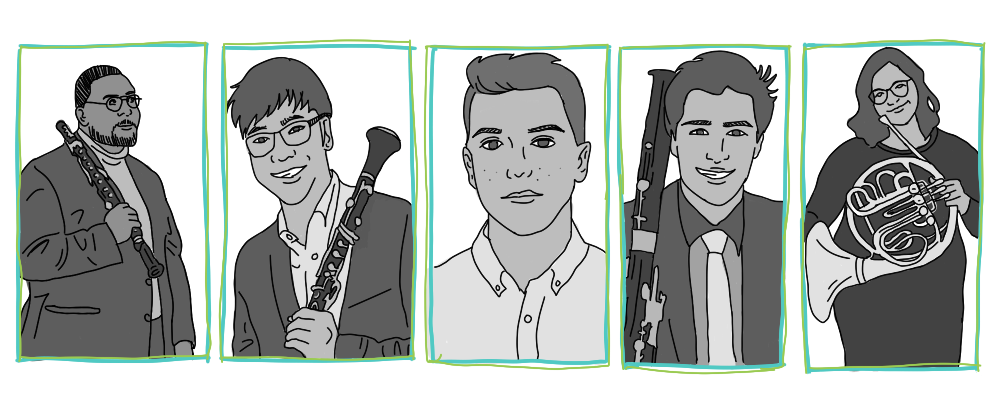
Header illustration by Phoebe Nerem, for Corey Schmidt’s July piece “Breaking Down Barriers Through Classical Music.”
With journalism, constantly learning is part of the job
Corey Schmidt, Associate Editor
I learned a ton about reporting in 2020, both about different aspects of the world and simply how to report in general. In 2020, I took my first journalism class during the Spring Quarter, so I have no idea what it was like reporting without a global pandemic. Being new to journalism, I learned a ton this past year thanks to my editors, specifically Marissa Nelson and Marissa De La Cerda, who have helped me learn AP style and reporting practices.
In 2020, I took my first journalism class during the Spring Quarter, so I have no idea what it was like reporting without a global pandemic.
The piece that I have learned the most from reporting was from my Breaking Down Barriers Through Classical Music article. This article brought to light how racism is shown in classical music and how many musicians are fighting to stop the trend. As a music major, reporting this piece made me reflect upon music education; I realized that most programs are located in predominantly white areas, making it difficult for those not in that community to physically get transportation for proper music education, resulting in a total of only 12 percent of classical musicians being people of color.
Fortunately, this article brought to light how musicians want, and need, to change this trend, from groups like the Shades Wind Quintet promoting diversity in music performance and education, to musicians like Hannah-Grace Mowery and Lauryn Nelson putting on fundraiser concerts, to support groups like the NAACP Legal Defense Fund (LDF) and the COVID-19 African American Relief Fund. Not to mention the formation of the DePaul University School of Music Student Coalition of Diversity, calling for actions to be made by the DePaul University School of Music to bring more diversity to our education while also calling for the removal of Ronald Caltabiano, the dean of the School of Music.
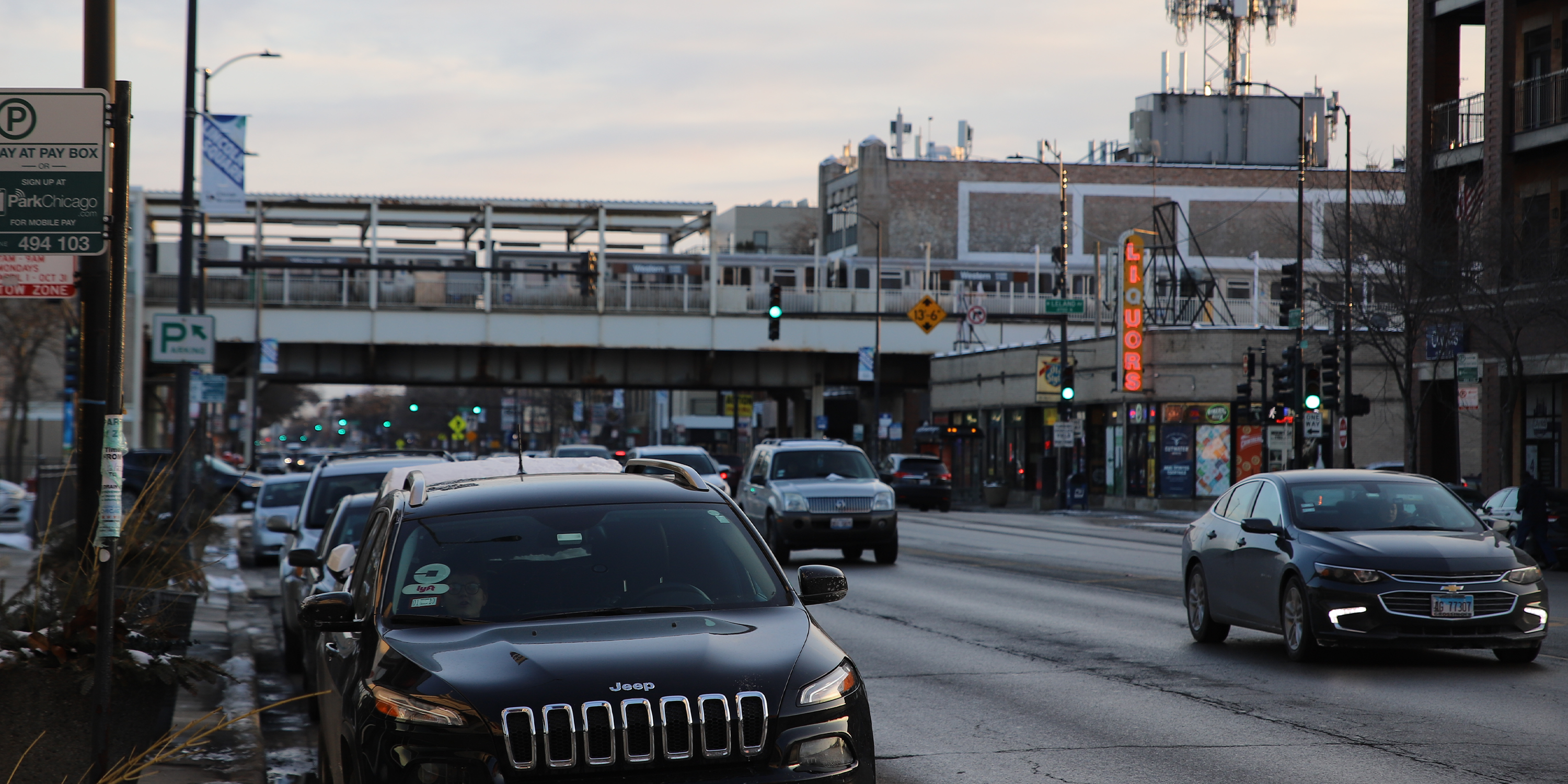
Photo by Chris Silber for his March piece “Walking Western: a 24-mile Journey.”
Communication is essential for the editorial process
Christopher Silber, former Managing Editor
Editing in spring 2020 was obsessively refreshing Newsline to tweet out what buildings were open and closed. It was riding my bike to campus to take pictures of empty buildings from a distance. It was sending weekly messages trying to figure out what editors had the time and mental health to take on a new story.
I scheduled stories, assigned editors and managed the magazine’s editors during the first few months of the pandemic, so mostly I learned about communicating and planning during uncertain times. We had to move a lot of stories around and be flexible regarding staff availability. As expected, sometimes contributors and editors had to take unplanned breaks. We had to consider each other’s mental and physical health. I was lucky to have up to nine editors (including management) to work with on any given week. I occasionally had to ask an editor to take on an extra story here and there, but only if they had time. Some stories took longer to finish than planned. Some couldn’t pan out. Some had to be published on a short deadline. All these issues could work out as long as the staff was communicating and didn’t have too much on their plate.
I think that when change is happening, it’s important to remember the basics of reporting and editing. That meant following our writing and editing standards (with a few amendments to maintain social distancing and safely cover protests) and never publishing a story that wasn’t ready. It’s worth noting that we ended up publishing more stories per week than we ever had before during that quarter. I think that fact demonstrates the sustainability of student journalism and online publishing even during trying times.

Header image by Yusra Shah for Jamie Cooley’s September piece, “Service Learning During a Time of Pandemic and Protests.”
Producing more inclusive content starts from within the newsroom
Francesca Mathewes, Editor-in-Chief
The events of 2020 – ranging from the disproportionate impact of COVID-19 on Black and brown communities to police violence and a heated election – brought this country’s reckoning with racial equity to the forefront of many industries, institutions and community conversations, journalism included. In order to cover these issues in a way that is comprehensive, aware and just, newsrooms need to reflect the communities they seek to serve. Accomplishing that means evaluating hiring practices, standards of conduct and more. 14 East took notes from our friends at City Bureau and removed our cover letter and resume requirement from our hiring process – read more about why here.
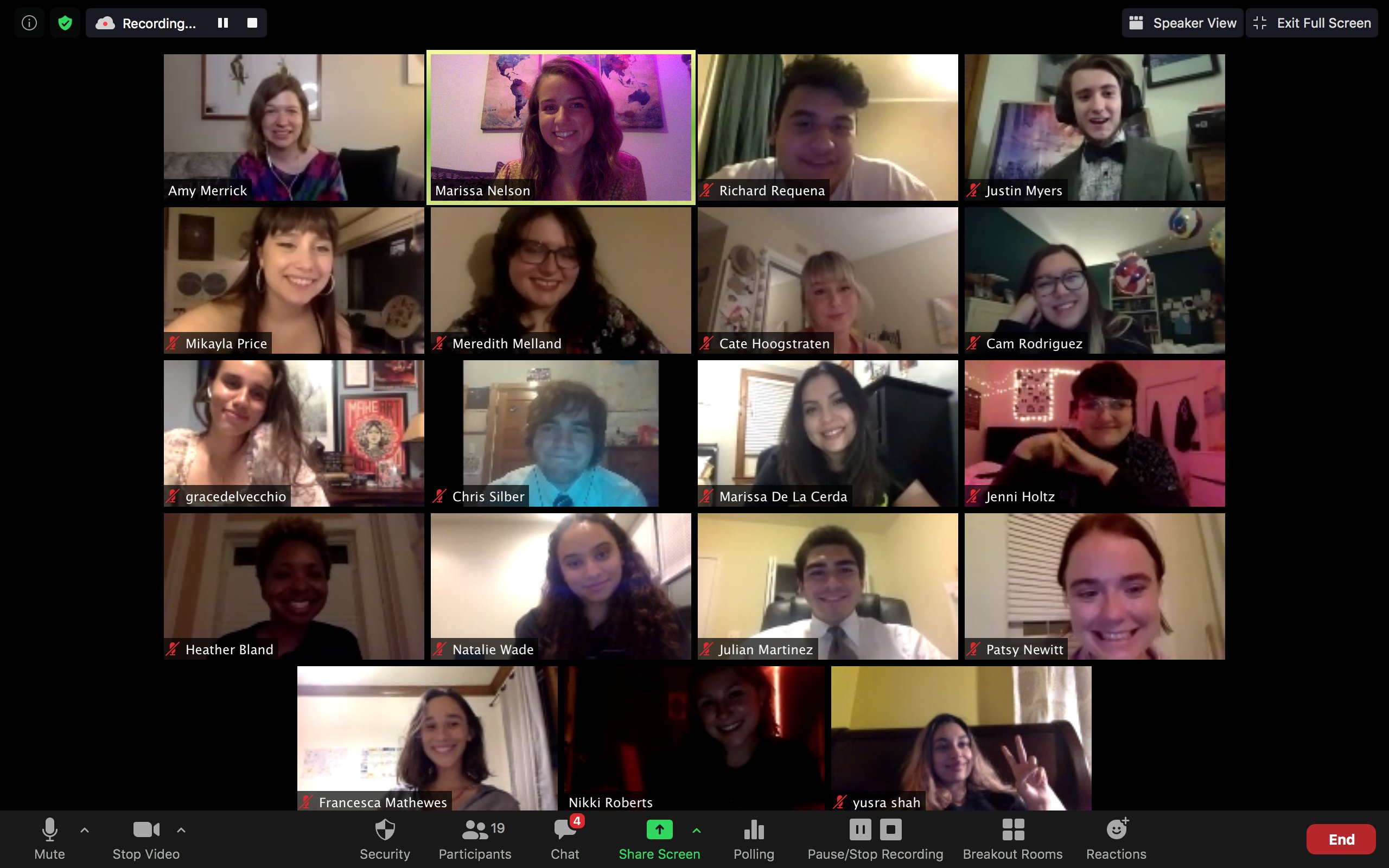
Screenshot by Marissa Nelson / @ByMarissaNelson
How to lead through a crisis
Marissa Nelson, former Editor-in-Chief
During the early moments of the pandemic, and throughout my last few months as editor-in-chief, I thought a lot about what it meant to be a leader during a crisis.
How could I take care of my staff without being physically there to help meet their needs? How could I be mindful of my team’s mental health and bandwidth, while also accomplishing the hefty goals we had planned for the quarter? Especially when said team doesn’t hesitate to overcommit and lose full nights of sleep for projects.
I looked to what professional newsrooms were doing, and turned to our management team of Chris Silber, Francesca Mathewes and Amy Merrick. We prioritized our staff’s well being and mental health over everything else — understanding that this was the one time in which we embraced the “student” in our reporter title.
This meant doubling down on our weekly icebreakers and check-ins, and always making space for our staff to take the week off.
On Mondays, I checked in with every staff member individually on Slack to see how they were doing and what they needed (both in terms of their projects and workload, but also their well being).
We added themes to our weekly meetings (like goth night, beach day and outer space), and kept them as short as possible. We focused on community building during our virtual time together. And we made space for the staff to share where they were at each meeting. I’d ask: “On a scale of zero to 10 how are you doing?” inviting everyone to go above or below zero and 10 if that number fit better. I never asked folks to explain their number, but usually everyone would, signaling to me the strength of the community we had built and the longing to be in this moment together, and there for one another, even if it was virtually.
I would like to think that this made 14 East a respite for the staff — that meetings were either an escape from COVID’s devastating realities or at least a small (virtual) moment of almost-normalcy. I know that’s what they were for me.
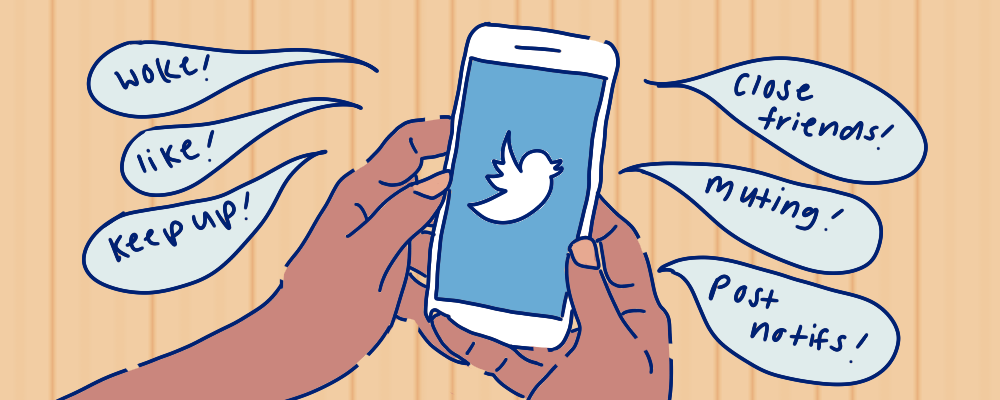
Header image by Phoebe Nerem, for Damita Menezes’ September piece “The New News Platforms.”
It’s important for everyone – including journalists – to take time away from the news.
Francesca Mathewes, Editor-in-Chief
The past year has proven without a doubt that it is, whether we like to admit it or not, impossible to not in some way internalize the turbulence and fear and anxiety of the world around us – especially when your 9 to 5 involves tracking, processing and publishing or broadcasting content about said world. This impact of this dynamic can be even more heightened depending on the intersection of your identities and experiences in the world and how that is reflected in the currents of this day and age.
It’s enough to make you feel far away from yourself, disconnected from the things that make life beautiful and enjoyable. So when I urge you to take a break, I think that process should be intentional, not just scrolling on Instagram and TikTok mindlessly or listening to a news-adjacent podcast calling that a break (guilty as charged).
I want to see us all continue to do what we love and be at our best for a long time – so please, in 2021 and beyond, give yourself a rest.
It’s much harder said than done, especially when a lot of social outlets are not safe during the pandemic. I’ve only just begun to figure out a real method of intentional resting (with the help of an affordable counselor – shout out CRP Chicago!)
Meditation is something that has been recommended to me a lot, and works for tons of people. But if you’re like me, and I suspect many journalists are, it helps to also have something to do that itches that sense of I need to be doing something that feels productive or engaging in some way, to pass the time, something that signals your brain to relax.
My unprofessional advice: Tactile activities are great for this. They’re sort of meditative in nature and allow you to feel “busy” while giving the mind a rest. My roommate is a huge craft person and put me onto clay modeling. It’s literally grown up Play Doh, and wonderful to do while watching a show or listening to music. Crocheting, drawing, doing puzzles, collaging (I know you’ve got non-digital magazines laying around) are all within this umbrella of activities. I’ve found it helpful to think back to when you were a kid and had all the time in the world to sit around and play – what were the sort of things you did to pass time? What sort of things did you do on rainy days when you couldn’t play outside? How did you make yourself feel comfortable and entertained?
Again, I’m no professional. But I love doing journalism and am surrounded by so many brilliant, talented journalists at 14 East and in Chicago. I want to see us all continue to do what we love and be at our best for a long time – so please, in 2021 and beyond, give yourself a rest.
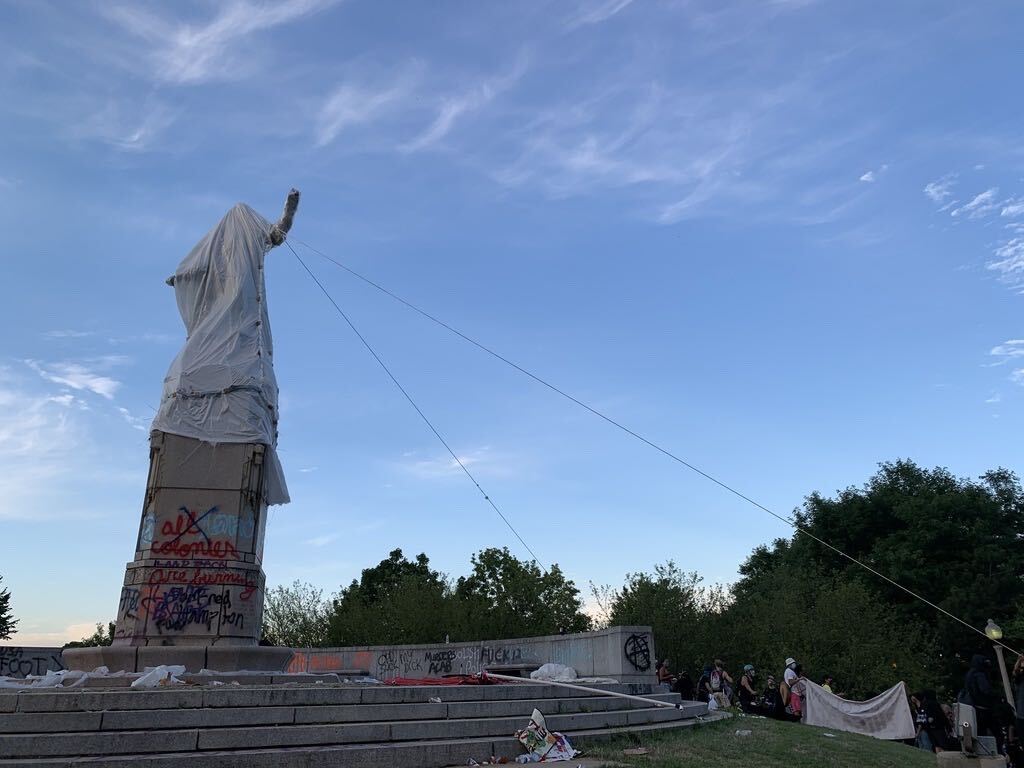
Header image by Grace Del Vecchio, for July’s “What We Saw at #DecolonizeZhigaagoong.”
Journalism is a collaborative, collective process and we need to treat it like one
Grace Del Vecchio, Community Engagement Editor
I walked into 2020 promising myself that it would be the year that I would decide if I actually wanted to be a journalist. 2020 decided that for me.
July 17, 2020, joined the plethora of historic days that came out of this year from hell when CPD officers brutalized young protesters who attempted to tear down the Christopher Columbus statue in Chicago’s Grant Park. It was a moment that Editor-in-Chief Francesca Mathewes and I knew needed to be addressed. In collaborating on our reflection of that day, it was the first time I was able to process an action from that summer and then offer my own unfiltered recollection of that day but, most importantly, I was able to learn.
I’ve learned a lot of lessons over the past year. Some of the most important was intertwined with my identity and my role within this incredibly intricate community of storytellers.
I walked into 2020 promising myself that it would be the year that I would decide if I actually wanted to be a journalist. 2020 decided that for me.
I’ve boiled down these lessons into the following four:
- Be conscious of the spaces you occupy.
Distrust in media has only grown over the last and justifiably so. Therefore, when reporting on protests and actions, which are incredibly emotional and intense affairs, we need to consider how our presence, as journalists, impacts that space. Are we taking up space (physically and metaphorically) where we shouldn’t be? Is our presence wanted at that action? Why or why not?
- These stories are not our own.
Especially for white journalists and media makers, our trauma is never as great as the trauma of Black and Brown people. Furthermore, these stories of trauma inflicted on Black and Brown communities aren’t our own and we have to tell them collaboratively and with respect. Do not report with entitlement but with humility and thankfulness to be given the opportunity to tell someone else’s story.
- We must take care of ourselves so we can take care of others.
While I do believe it is very important to practice perspective when it comes to our own struggles as journalists (especially white journalists) in comparison to those of the people we cover, we do need to practice self-care. If we don’t take care of ourselves properly and address our own struggles, we will not be able to serve others properly. Journalism is a public service and if we cannot serve, we cease to be useful to our communities.
- Documenting movements can’t be about yourself, it has to be about and for the collective.
Getting a byline is great. Being interviewed about your work is validating. I’m not denying either of these things, but beyond the fact that it is a part of our job description to be published, our work cannot be about us or our own personal gain. When covering communities and the movements driven by communities, our work must be rooted in the betterment of the collective. In other words, clout chasing is not welcome here.
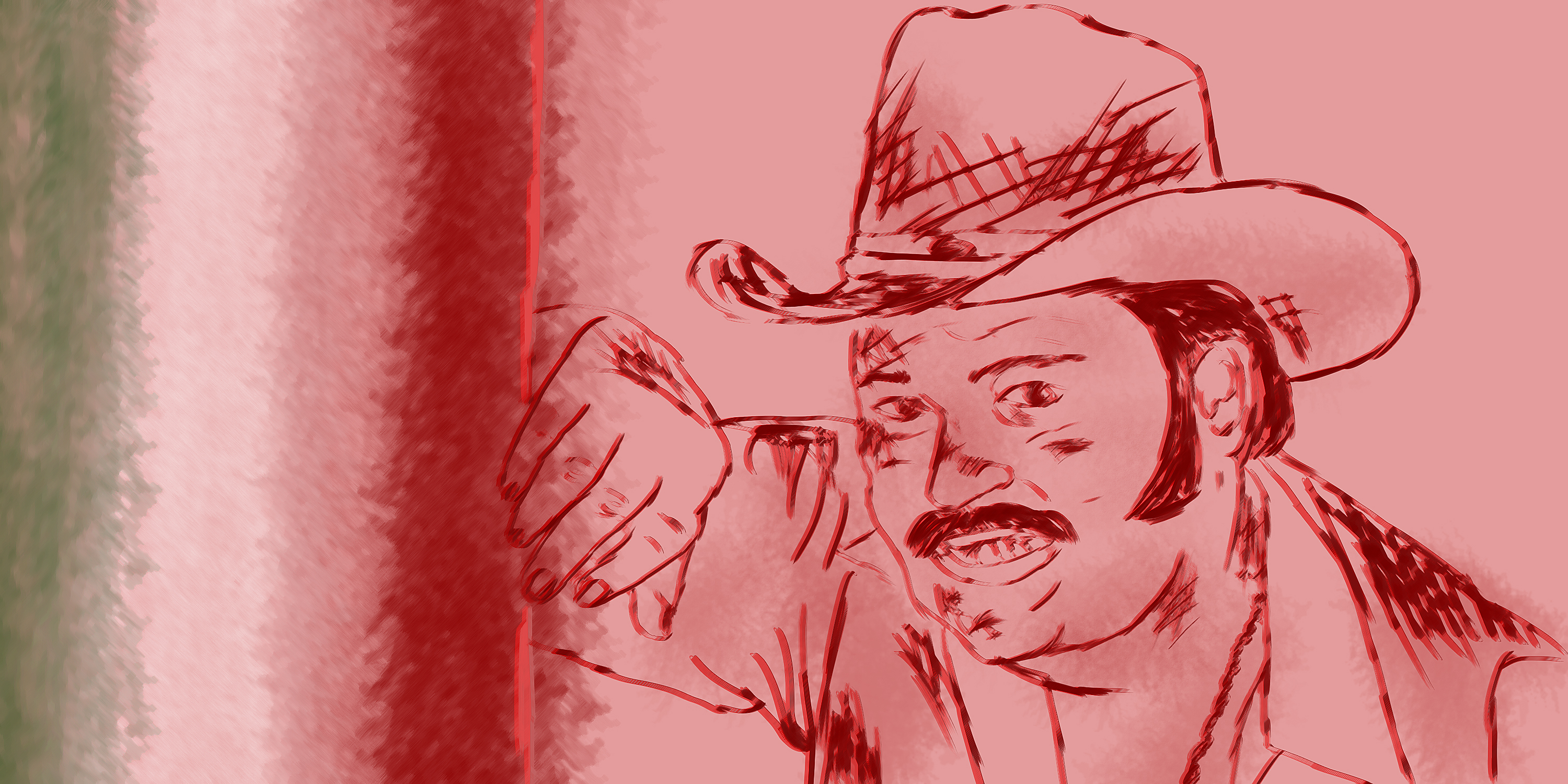
Header illustration by Yusra Shah for Julián Martinez’s December piece “In My Mexican Heaven, Ramón Ayala Plays Every Night.”
Self-examination is crucial when everything is political
Julián Martinez, Pueblo Creative Editor
In 2020, I extended my writing to not only poems — my comfort zone — but to essays on music and how it has impacted my life. As a first-generation American citizen and person of color dedicated to ideas of anti-capitalism and anti-imperialism, these essays inevitably studied the politics around the music I wrote on, as well as their role in my own politics. It was a tricky thing, then, to write about myself in a way that was not self-aggrandizing or indulgent as I analyzed my listenership. Particularly in a time during which the world’s conversation spirals into the increasingly apocalyptic, how do you write about music without it being facile?
After all, to write a music essay or, frankly, any essay, any written piece on anything, is to put that thing on a pedestal, the song, the album, the artist, whatever. Whether you think you’re celebrating it or not, you’re making room for it in an already crowded room. I mean to say that using your voice is important. What you focus your voice on is even more important. What it means for that thing to exist out of your voice, in the context of your experience, your own growth as a citizen and human being, is probably the most important of all to voice.
I mean to say that using your voice is important. What you focus your voice on is even more important. What it means for that thing to exist out of your voice, in the context of your experience, your own growth as a citizen and human being, is probably the most important of all to voice.
For example, how do you, as writer and enthusiast, reconcile the colonialist history of the American cowboy with some damn good country tunes written by white folks? How do you then reconcile this with your own Mexican heritage and the ways that the cowboy aesthetic has racially marked you in life? I don’t mean to say that I pulled this off in any exemplary way, but I knew that I had to ask myself these questions. If not, if I were to ignore these things and just write about how much I dig country-pop, I wouldn’t be doing the cultural context of this music any justice, and if I have learned anything in 2020, it is that silence is almost always irreparably violent.
In 1970, the phrase ‘the personal is political’ was made popular after the publication of an essay by feminist writer Carol Hanisch. For one, this says to me that journalism that does not fear political alignment with liberation movements is important. I’ve never considered myself a journalist and I’m still iffy about it, but I know that my essay writing is a political act. An essay on Mexican norteño music might not affect America’s inhumane immigration policies, but I was told by a Mexican immigrant that reading something about their favorite musician that I wrote made them feel seen and spoken for in a country that prefers them and I both voiceless.
For both me and my family and the world at large, 2020 was a year of grief. There was also music. Music that was danced to and music that felt pointless in the face of so much loss. There was music, nonetheless. Music taking up space and people continuing to take up space. I know I will continue exploring this relationship in 2021 and beyond because of how much it affects me and how much it affects my community. I am a product of this community, and I know that, entering 2021, the people I call my own will continue to sing and will continue to be heard.
I learned that journalism — at every level — plays an essential role in times of crisis
Marissa Nelson, former Editor-in-Chief
I knew journalism had a critical role in society and democracy. We hold the powerful to account. We ask public officials the tough questions. We mine for answers, inform the public. But, looking back, my understanding at the time feels rather abstract. I romanticized months-long investigations and feature stories (which, to be clear, I still do), but I took for granted the importance of shoe-leather reporting.
It wasn’t until we were amid a public health and economic crisis — when news was changing by the minute — that I truly grasped just how crucial basic journalism is: getting the facts, documenting experiences and reporting the information as quickly and accurately as possible.
In March, there was no centralized COVID-19 information hub. Instead, local, state and national reporters pieced this pandemic together, creating tools, websites, newsletters and podcasts to help the country (and world) begin to make sense of what was happening.

The first email of 14 East’s weekly COVID-19 newsletter, which has been running since March.
When DePaul announced classes were moving online for Spring Quarter, students were left with a lot of unknowns — the logistics of moving off campus, what buildings were open, if graduation was still a possibility (oh, the optimism of the early days).
At 14 East, we focused on getting as many answers from the university as possible, publishing the info and sharing on social to get the information out quickly. Then, we started a twice-weekly newsletter to pull together DePaul, Chicago and national news.
It was in the early moments, and months to follow that I understood how necessary journalism is during crises, especially for residents trying to figure out what is happening, and what they need to do.
It wasn’t until we were amid a public health and economic crisis that I truly grasped how crucial basic journalism is: getting the facts, documenting experiences and reporting the information as quickly and accurately as possible.
With all the bad things 2020 had to offer, one good thing came too: newly found resourcefulness
Yusra Shah, Multimedia Editor
2020 was a tough year in mostly every way imaginable, and this includes being a tough time for journalists. Dealing with the stress of COVID-19 and adapting to an at-home learning environment all while living through major political and historical events was a lot to handle and a tad overwhelming. But the one thing that 2020 also handed me was a sense of urgency and excitement when it came to my work at 14 East. My most vivid recollection of this was our last meeting before the world seemingly shut down due to the spread of COVID-19. We were all in the newsroom longer than usual, figuring out how to churn out stories regarding this infection that was so new to us but quickly taking over our lives. I remember people shouting across the table, helping each other contact sources. I remember stepping to the side to call someone, wondering if their boyfriend could provide information as a source for one of our stories regarding school closures. Within the hustle of it all, I realized we had so many stories, maybe four or five, and no cover art to go with them.
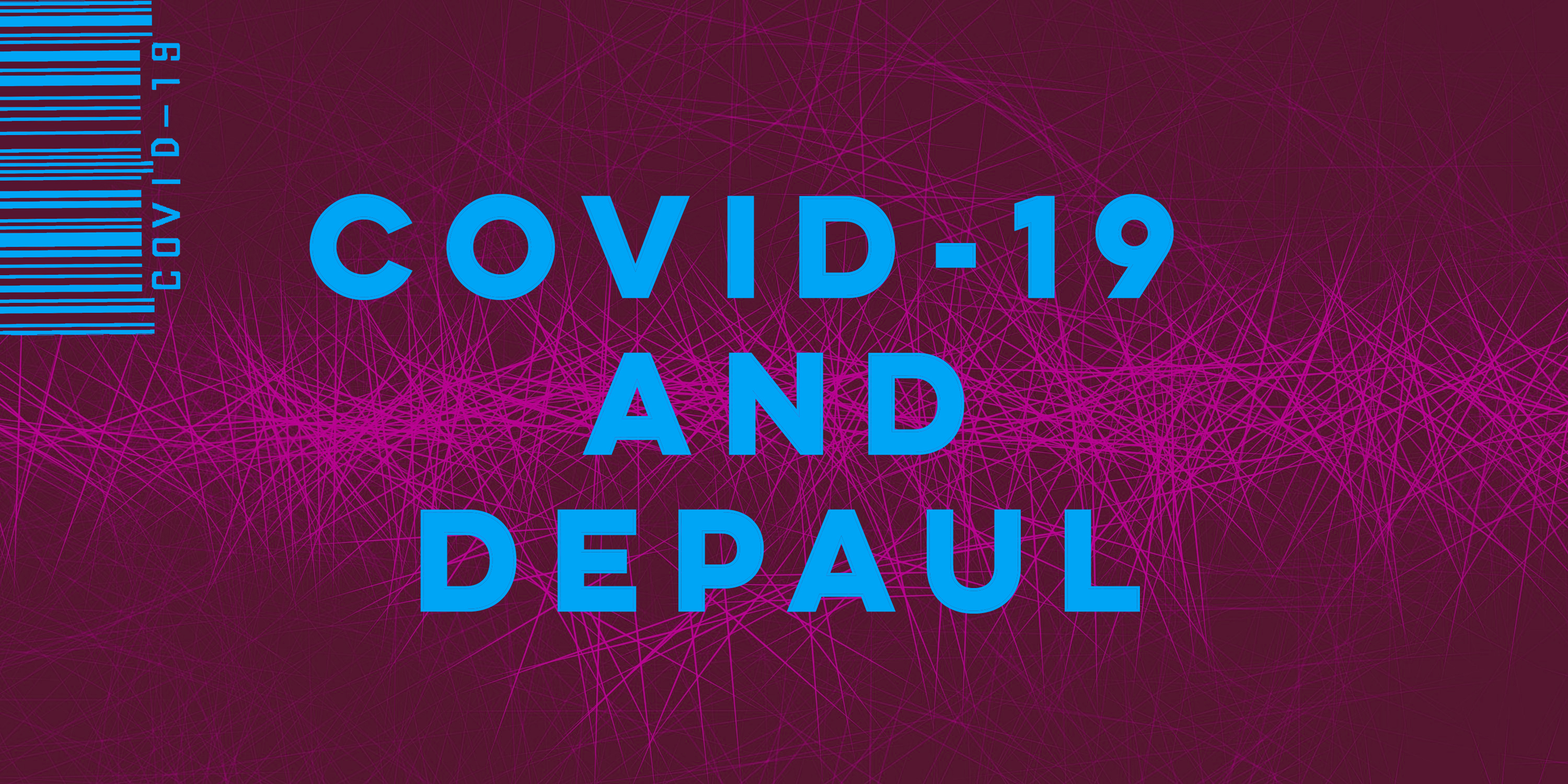
One of the headers created by Yusra Shah and the multimedia team for breaking COVID-19 stories in mid-March.
I decided at that moment to speak up, which is something I usually don’t do, and mention our lack of headers. My coworkers realized the same thing and I offered to whip something up. Seeing as we had four stories all on COVID with no header and a time clock ticking to get us out of the building our newsroom was located in, I had to pull a few strings and see what I could come up with. After a little brainstorming, we realized our previous staff illustrator, Jenni Holtz, had drawn a virus image for a story. We reached out to Jenni and asked if I could edit and use their image to create headers for our timely, and headerless, stories. Jenni agreed (thank god), and I was able to use their image of the virus and manipulate it into different colors and make 4 similar headers out of their one drawing. Each header was a different color, but all had the story’s title in the same font. This created a web feed that made all the COVID-19 stories look related, but also signaled the difference between each one.
If I wasn’t faced with the pushing deadline and timeliness of getting those stories onto the website as soon as possible, I wouldn’t have been able to come up with something so quickly and use my teammates to help me. This was exciting to me — it showed that despite the stress of everything that was happening, I was able to not only pay attention to what was missing, but also make it happen on the shortest of notice.
Resourcefulness is something that the 14 East team has become very good at throughout these difficult times, and another prime example is the staff portraits. Every year, 14 East has a photographer photograph staff for our website. This year, due to social distancing measures and the virus, we were unable to do that. That didn’t stop us from representing our staff! Instead of photos, illustrators Phoebe Nerem, Bridget Killian and I drew staff portraits in 14 East’s colors for the website! We could’ve just had no images for staff this year, but instead used our skills usually reserved for story headers to create our own versions of headshots. It works just as well and is also different and artsier than what most publications do anyways. A win-win in my books!
The hardships we faced this year definitely are not something I ever wish to deal with again, but despite everything, I’m glad that I have learned to become a more resourceful journalist and also to collaborate with my peers to get things done. It’s a way of working I definitely will hold on to for the rest of my career.
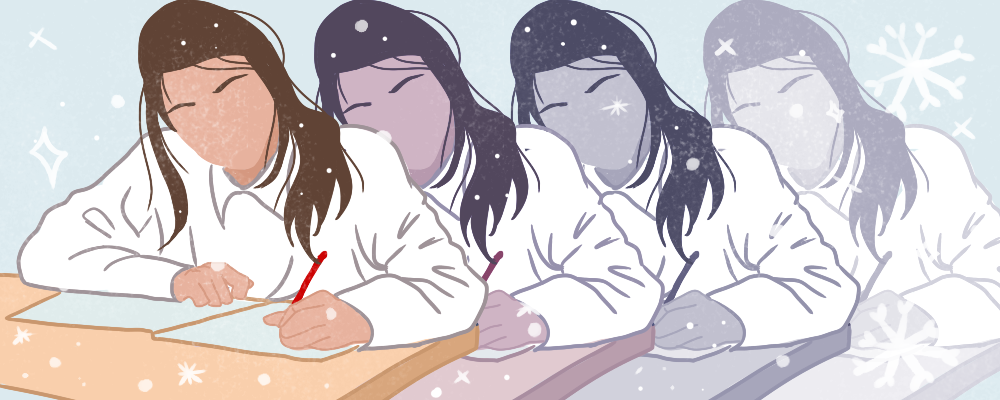
Header illustration by Phoebe Nerem for Eiman Navaid’s October piece, “First Year Students Adjust Plans to Accommodate for Winter Quarter.”
A remote start to collegiate reporting
Eiman Navaid, staff writer
The first story I wrote as a college student journalist for 14 East Magazine was about how students were planning around the winter quarter changes at DePaul University. For this story, I needed multiple different student perspectives. In a way, it was easier to gather quotes in a remote setting — I could easily post the article I was working on and ask who was willing to contribute. The difficult part, however, was following up with everyone who responded to remind them, make sure they didn’t forget, and word the questions as clear as possible so they would understand. While social media and remote working has its perks, in journalism, it’s always more effective to set up a time in person.
Another story I wrote was a coffee shop review. With this, I had to keep in mind the current state of the world, particularly with indoor dining lockdowns due to the COVID-19 pandemic, and mention how the place had been affected physically. This added another layer to my review which I never had to include before, especially considering it was a small business. I learned how I would have to include more components in some articles based on current events during publishing, stuff I never had to think about before.
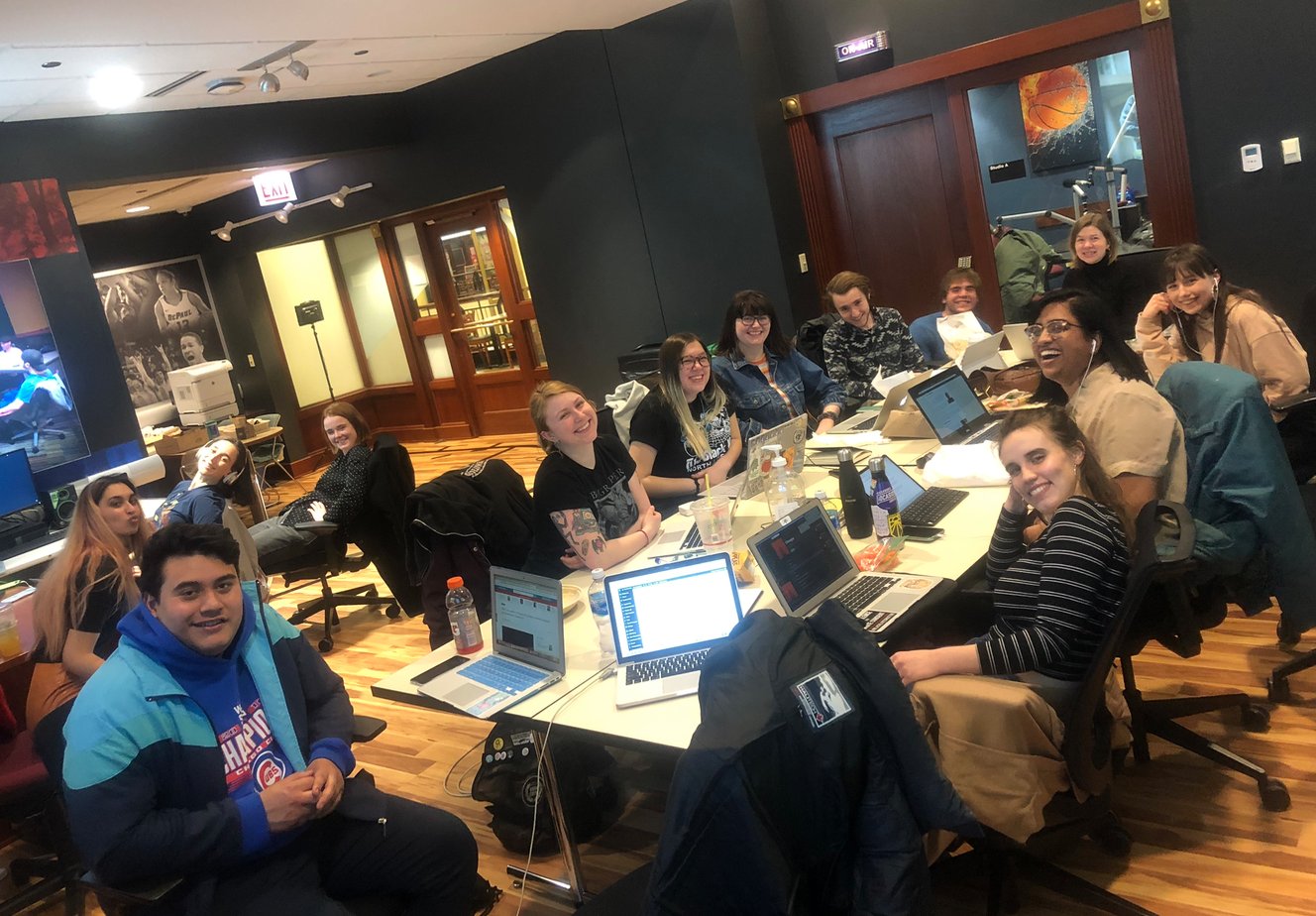
The last day that 14 East staff was in our 1 E. Jackson Ave newsroom in mid-March. Photo by Marissa Nelson, 14 East.
2020 has been nothing short of challenging. As a whole, we dealt with a global pandemic and mass grief, national uprisings and trauma, and a presidential Election Day-turned-week with ire that’s carried over into this year. While we can’t undo 2020, we can learn from it.
The majority of what I do at 14 East is editing and emailing — lots of it. A lot of my work isn’t visible to readers, partly by nature of the role, and I used to think that was a sign of me doing my job well. But this year has shown me that it’s easy to distrust journalism when the intentions of reporting are unclear. Why would you entrust a reporter with your story if you don’t know what they’ll do with it? Why would you share details about traumatic events when you don’t even know who we are?
During my work with 14 East and outside of the magazine this year, I focused on trust building, engagement strategies and trauma-informed reporting, learning from our past projects and looking at spaces where we could improve. I thought about my own experiences with the press before I even decided I wanted to be a journalist, I looked at what information was essential to communities, and where there were deficits in information, geographically and digitally.
While this year might seem just like a continuation of the last, I’m confident that it’ll still be somewhat of a new start — even if it sort of just feels the same. 14 East (and I) learned a lot this past year, and we still have a lot more to learn as 2021 goes on.
Cam Rodriguez, Managing Editor
Header image by Francesca Mathewes


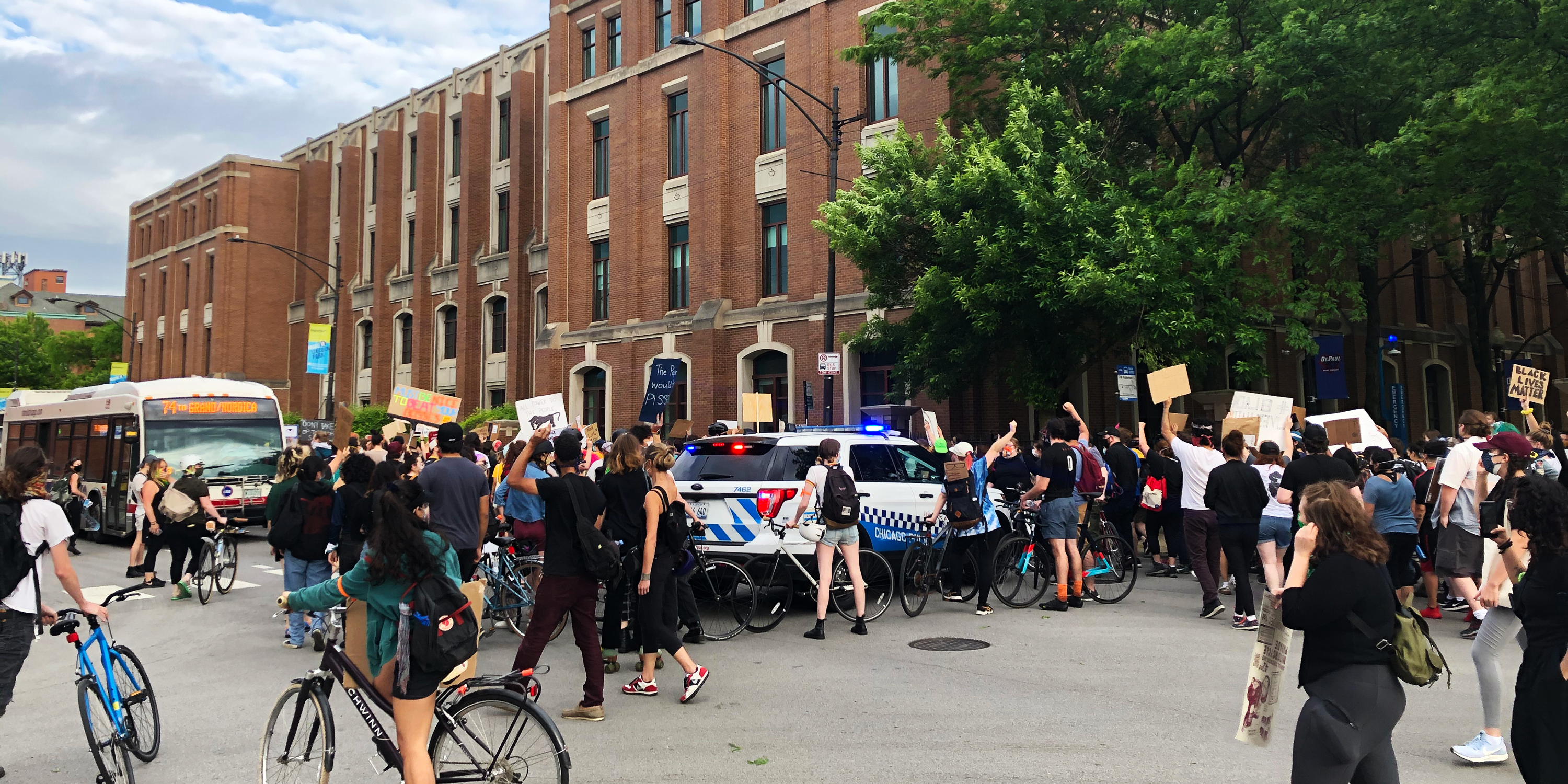

NO COMMENT